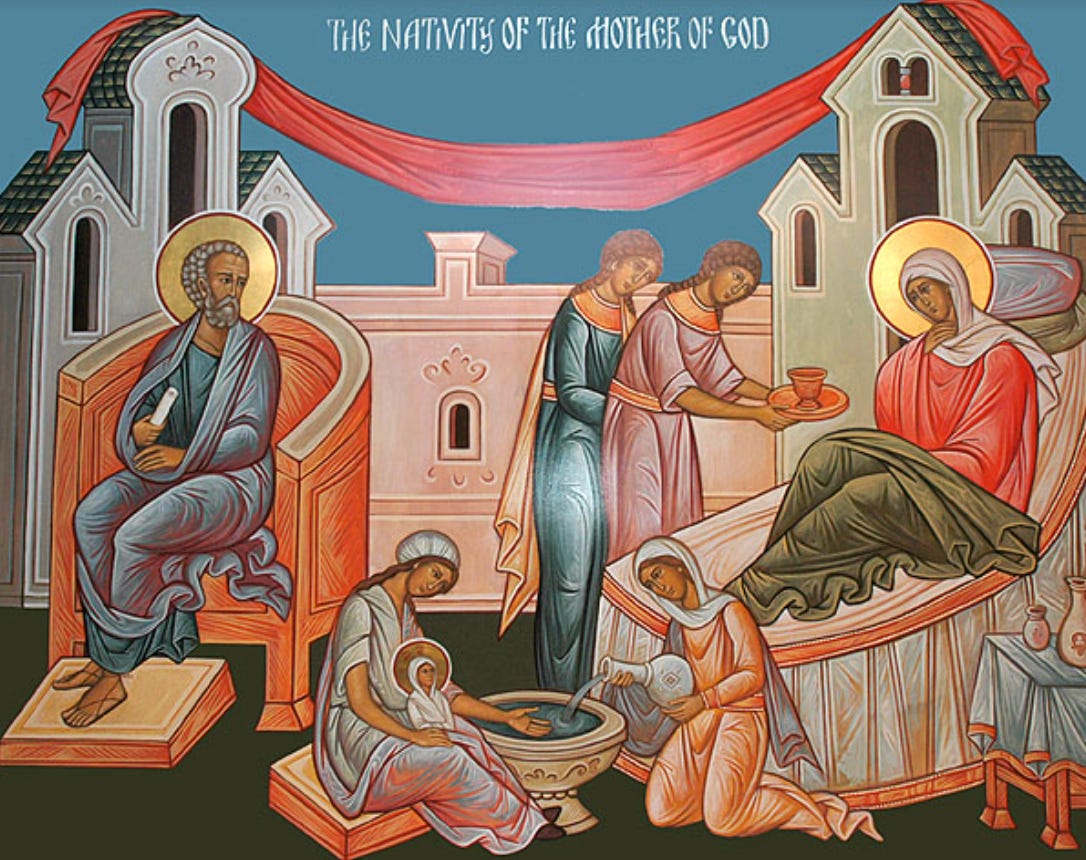The Birthday of the Blessed Virgin Mary
Mary was brought into the world unlike other children of Adam: not deprived of sanctifying grace and prone to sin, but pure, holy, beautiful and glorious
THE BIRTHDAY OF THE BLESSED VIRGIN MARY
The birth of the Blessed Virgin Mary announced joy and the near approach of salvation to the lost world, and so this festival is celebrated by the Church with praise and thanksgiving. It was a mystery of holiness, distinguished by unique privileges. Mary was brought into the world unlike other children of Adam: not deprived of sanctifying grace and prone to sin, but pure, holy, beautiful and glorious, adorned with all the most precious graces becoming her who was chosen to be the Mother of God. Man was no sooner fallen in Paradise through the woman led away by Satan, than God promised another woman, whose seed should crush the serpent’s head. At the birth of the Virgin Mary the accomplishment of that promise was begun.
To study the lessons in the life of Mary, to praise God for the graces conferred upon her and the blessings which through her He has bestowed on the world, and to recommend our necessities to so powerful an advocate, we celebrate festivals in her honour. This of her birthday was kept first in the East. In the West we know for certain that Pope St Sergius (A.D. 687–701) ordered that four separate feasts of our Lady should be kept in Rome—the Annunciation, the Assumption, the Nativity and the “Hypapante” (i.e. the Purification). But there is much probability that in certain other parts of the West the Nativity was commemorated earlier. It is clearly entered in the Calendar of St Willibrord (c. 704), and the mention in the Auxerre Hieronymianum (c. 600) is suggestive of a higher antiquity. What strongly supports this view is the fact that a feast of the birthday of St John the Baptist was known in the time of St Augustine, probably as early as 401. It was inevitable that when people realized that the beheading of the Baptist and his birth were honoured by two separate celebrations, the idea would suggest itself that the birth of the Mother of God ought to be similarly commemorated. Hence to the feast of her Assumption or Falling Asleep was added that of her Birthday. (Cf. the feasts of the conception of St John and of our Lady.) The birthplace of our Lady is unknown. An ancient tradition favours Nazareth and this was accepted in the West; but a parallel tradition named Jerusalem, and specifically the neighbourhood of the pool of Bethesda, where a crypt under the church of St Anne is now venerated as the spot where the Mother of God was herself born.
From Butler’s Lives of the Saints



